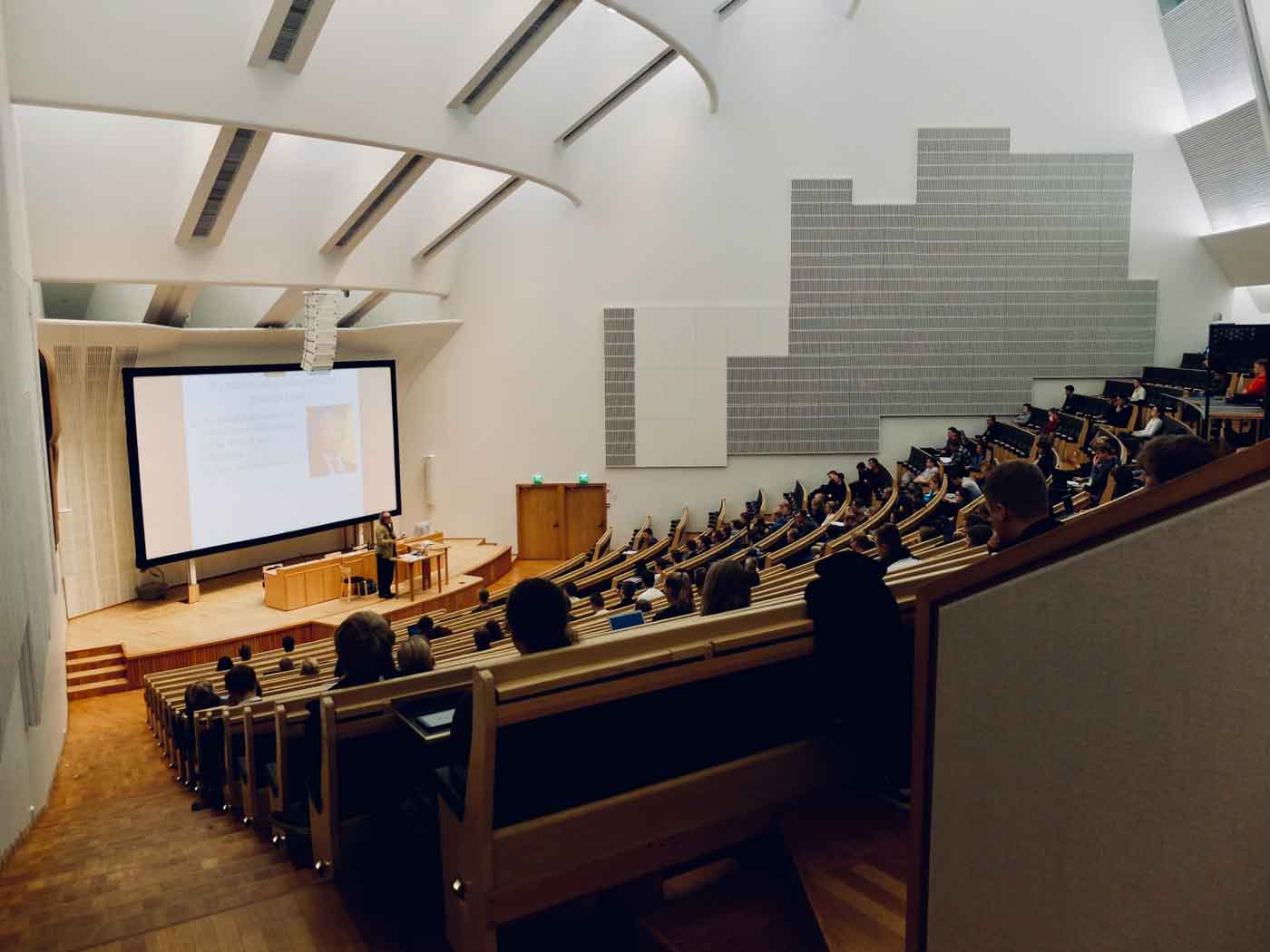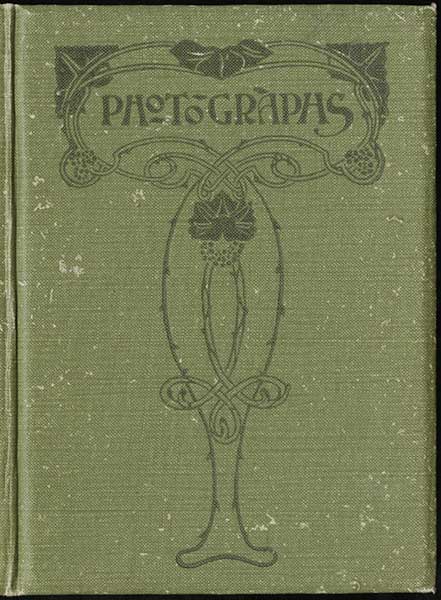chairs /
- Devon Smither, University of Lethbridge
- Anne Dymond, University of Lethbridge
What will your teaching look like as we slowly shift back to the classroom? Most art and art history classes were drastically altered when the pandemic hit as we moved our teaching online. This change led many of us to reconsider and reconceptualize our pedagogical approaches, including new technologies and techniques for remote teaching and learning. Awareness of racial and social injustices exacerbated by the COVID pandemic has also required new approaches to anti-racist and social justice-informed pedagogy. This session invites short papers that address what has been gained from the pivot to online teaching as we now look to the future of our "classrooms" in the post-pandemic world. We are particularly interested in exploring pedagogical practices, assignments, and course designs created in response to the pandemic that will be carried forward to the in-person classroom or into a newly conceived hybrid environment.
Devon Smither is an Associate Professor of Art History/Museum Studies at The University of Lethbridge, located in traditional Blackfoot Confederacy, Treaty 7, and Métis Nation 3 territories. She is a founding member of Open Art Histories, a group of art historians in Canada devoted to advancing the conversation and scholarship on art, art history, and pedagogy. Her research and teaching interests include gender and modernity, modern colonial-settler art in Canada, and modern North American women artists. She is completing a book manuscript on the female nude in Canadian painting and photography from 1913 to 1980 (MQUP) and a manuscript on Pegi Nicol MacLeod: Life & Work (Art Canada Institute). She has published in RACAR, The Journal of Historical Sociology, and The Literary Review of Canada.
Anne Dymond is an Associate Professor of Art History/Museum Studies and former Board of Governor’s Teaching Chair at The University of Lethbridge, located in traditional Blackfoot Confederacy, Treaty 7, and Métis Nation 3 territories. Her book, Counting Diversity: Gender, Race and Representation in Canadian Art Galleries (MQUP, spring 2019), examines issues of representation and diversity in contemporary art exhibitions and has been called “a path-breaking study and an invaluable contribution to our understanding of the contemporary art scene in Canada.” She has been the recipient of a YWCA Women of Distinction Award and a University of Lethbridge Senate Volunteer Award for her work with refugee students.

University classroom.
H.6.1 Exploring Hybrid and Online Modalities: The Flipped Classroom Gets Flipped
Lauren Tate, University of Cincinnati
More than a decade ago, I attended a teaching workshop titled How to Define Good Teaching: Is the Lecture Dead?. The consensus then was that no, the lecture is not dead; however, there was also agreement that the traditional art history lecture format, where the professor stands in front of the classroom and the students listen passively, had considerable room for improvement. That workshop was the beginning of my pedagogical journey exploring hybrid and online teaching formats. When the COVID-19 pandemic hit, I was the only professor in my college who had experience teaching remotely, and I was asked to provide some guidance to my colleagues, now plunged into online teaching. In preparing a lecture on best practices for online teaching, I realized that the rules of the game had completely changed, and the goals of remote teaching had shifted. The appeal of online learning was no longer geared toward providing flexible options for students to learn anywhere and at any time. Now that all in-person teaching was abandoned, asynchronous formats were no longer the most desirable or advisable mode of information delivery and exchange. The goal now, as we were all forced into isolation, was to engage and connect with students in a way that simulated in-person learning. This talk will address the ways the pandemic forced me to rethink my approach to online teaching and provide some practical reflections on the successes and failures of adapting years of hybrid and online teaching to a more engaged, student-centred approach.
Lauren Tate is an Assistant Professor-Educator in the School of Art at the University of Cincinnati. She received her MA and PhD in Art History from Indiana University. Dr. Tate has presented portions of her research at the annual conferences of the College Art Association, the Midwest Art History Society, and the National Council for Black Studies. She teaches numerous courses on the history of art covering topics such as Modern European and American Art, Race and Identity in American Visual Culture, 19th Century Art, Approaches to Art History, Art Appreciation, and the History of Art survey courses. Tate leads two study abroad experiences: Art and Architecture History in the 'City of Light'–Paris Program and Art and Art History in Florence and Rome. Current professional interests include higher education pedagogy, supporting undergraduate research, study abroad, and community engagement.
H.6.2 Performance Praxis as Radical [Pandemic] Pedagogy
Kristen Carter, Florida Southern College
What does it mean and look like to teach histories and practices of embodiment amid experiences of profound alienation and disembodiment? What can histories and practices of Performance Art teach us about being together when physically apart? And what can these same histories and practices inspire, despite students and educators feeling emotionally distant and drained? This paper will consider these questions in relation to a series of interactive assignments that I designed for my undergraduate hybrid course, "On the Histories of Performance Art since 1900," in the fall of 2020 at Florida Southern College. My goal for this panel is to use these assignments — which asked students to carry out various Performance Praxes — as a platform to establish wider conversations about embodiment as a critical pedagogical model and radical basis for new strategies of teaching and learning in our post/pandemic world.
Each week, and in conjunction with lectures, students performed various exercises derived from simple instructions: "walk meaningfully for 30 minutes," "move every part of your body once," "record your body's place in the world." These assignments were inspired by Paulo Freire's writings on "conscientization" and my academic research into histories of experimental art education in the 1960s and 1970s, including the conceptual and phenomenological practices adopted at programs like CalArts, NSCAD, and the Feminist Art Program. This paper will describe and assess the translation of these histories and embodied praxes into a hybrid model of teaching, including their resonance with course learning outcomes, how students connected and reflected, and what they gained or lost in their experiences. I argue this class not only offers an important case study for engaged learning within the demands of "pandemic pedagogy," but it also re-asserts the value of embodiment as a way to understand history, the world, and each other with greater empathy.
Kristen Carter is an Assistant Professor of Art History at Florida Southern College. She recently earned her PhD from the University of British Columbia, specializing in modern and contemporary art history with a particular focus on American art in the 1960s and 1970s. She has presented and published on a range of topics, including performance, body art, and dance, histories of art and pedagogy in the early 1970s in the US, Europe, and Latin America, and the changing relationship between art and politics circa 1968. Carter is currently working on two research projects. The first examines histories of experimental art education in California in the early 1970s and alongside new definitions of political contestation after student revolt. The second studies the violence of body art in the 1960s and 1970s within historical and contemporary notions of toxic masculinity.

Online learning.
H.6.3 Inverted Instruction in Studio Classes
Natasha G. Somerville, Anderson University
During the pandemic, when classes shifted to hybrid/flex models, this created a dilemma for studio classes. How could professors manage time, lectures, demonstrations with limited time with students in person? Inverted Instruction is pedagogy in which lectures are pivoted outside of the classroom, and in-class time is reserved for activities that clarify and reinforce concepts learned in lectures or readings. How can this be used to maximize and manage time in studio art classes? Before starting a new project, lectures or readings are provided to students with enough time to absorb information. Short quizzes can be completed directly following the completion of lecture material or at the start of the next class. The first few minutes of class are therefore reserved for Q&A with students, followed by a short assignment that reinforces and clarifies material further. This can be a time for demonstrations or pared down versions of the larger project to be created by students. Once these steps have been completed, students use the rest of their class periods to complete their larger project. Inverted Instruction engages students and allows for more time to talk and work through complex project ideas. While useful for introductory or foundation level classes, it can be adjusted for any class level.
Natasha Somerville is a painter and educator based in South Carolina of the United States. In 2007, she earned a B.F.A. in Painting from Savannah College of Art & Design. She completed her M.F.A. in Studio Art at the University of Kentucky in 2011. For four years, she taught at the University of Kentucky, followed by two years at Georgia Gwinnett College. Natasha is an Adjunct Professor at The South Carolina School of the Arts at Anderson University and Wofford College. She has exhibited in over 23 group and solo shows across 14 states, including New York, Chicago, South Carolina, Indiana, Kentucky, and California.
H.6.4 When Less is More: Engaging Zoom-Fatigued Students
Sarah Pollman, Emerson College
Visual Thinking Strategies is a curriculum that emerged in the late 20th century, developed by Abigail Housen, Ed.D and Philip Yenawine as a democratic and equitable approach to teaching art and art history to museum visitors. Today, as a result of the COVID-19 pandemic, the issue of how to best engage university students in both online and physically-distanced classrooms has emerged as a topic of particular concern; however, conversations often focus on technical solutions rather than pedagogical ones. This paper will address the issue of the disengaged pandemic learner by offering solutions based on Visual Thinking Strategies and other museum education approaches, looking at how deep engagement with singular images or objects increases comprehension and how this can be translated into the virtual classroom. Additionally, this paper will challenge assumptions that incoming university students all possess the same educational training, looking at how radical changes at the secondary education level have resulted in a new generation of students who enter university with disparate levels of academic training. I argue that education approaches developed by and for museums, such as Visual Thinking Strategies, offer a potential avenue towards equitable learning in university by centring the student, acknowledging personal experiences and biases and recognizing both interconnections and differences across cultures and historical moments. I will discuss both Visual Thinking Strategies and other museum education approaches and juxtapose them against traditional pedagogies to reveal how these methods can offer pathways out of the disengaged space of the online classroom and the masked anonymity of the physically-distanced classroom by bringing students towards deeper engagement with their instructor, their peers, and the course materials.
Sarah Pollman's (she/they) practice intertwines visual art, curatorial and pedagogical practices and is informed by principles drawn from art history, Critical Theory, and visual anthropology. Her research examines networks of signification in material culture with particular emphasis on photographic history, theory and production. Her work has been supported by grants and fellowships from Assets for Artists/Massachusetts Museum of Contemporary Art, Creative Capital/Warhol Foundation Arts Writers Grant Program, and Emerson College. Her book, The Distances Between Us, was published by Trëma Forlag in 2016, and she has curated exhibitions at the Photographic Resource Center, the Dorchester Art Project, and the New Art Center in Newton. She teaches in the Visual and Media Arts Department at Emerson College and holds an MFA from Tufts University and a BFA from the School of the Museum of Fine Arts at Tufts University. She currently works in Boston, MA, USA, on the ancestral and unceded lands of the Massachusett people.

Photo album cover.
H.6.5 Curating Course Content With Photographies
Andrea Korda, University of Alberta
Heather Caverhill, University of British Columbia
In this paper, we will discuss what we learned from developing Photographies — a virtual exhibition and Open Educational Resource (OER) — during the pandemic, while we were teaching virtually. The exhibition/OER features photographic materials of the University of Alberta Library's Bruce Peel Special Collections and also makes use of rich resources on the histories and theories of photography, which are available from other institutions, archives, and non-academic sources online. We will explain how our work on Photographies and our teaching informed one another. The practice of curating rather than producing content helped us to prepare for our courses, and teaching remotely influenced our approach to the exhibition. Designing this OER also pushed us to think of our students as active participants, with the capacity to take on the role of creators rather than passive consumers of content.
Andrea Korda is an Associate Professor of Art History at the University of Alberta's Augustana Faculty, located in Treaty 6 territory. Her most recent work examines the ways that images and objects were used in Victorian education, and her articles on this topic have appeared in the Journal of Victorian Culture, Victorian Network, and Paedagogica Historica. Along with Heather Caverhill, she curated the exhibition and open educational resource Photographies, and she is looking forward to using the resource in her history of photography courses in the years to come.
Heather Caverhill is a PhD candidate in the Department of Art History, Visual Art and Theory at the University of British Columbia. She is currently working in Treaty 6 territory. Her research is focused on nineteenth- and twentieth-century art and photography in the North American West. Along with Andrea Korda, she curated Photographies.